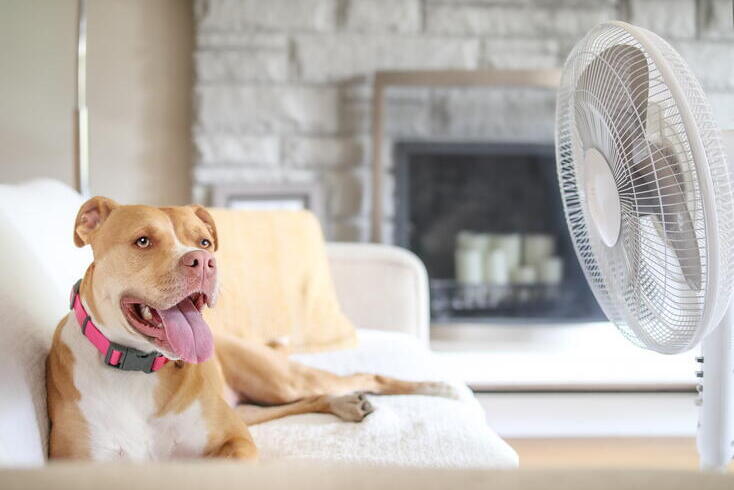Keeping animals safe and healthy during excessive heat

Excessive heat will once again blast much of the United States next week, with heat indices predicted to reach 110 degrees Fahrenheit or more in many locations. University of Illinois Urbana-Champaign animal welfare expert Angela Green-Miller says pets and livestock are at risk, and it’s up to humans to keep them safe.
Green-Miller runs the Animal Welfare, Environment, and Sustainability Laboratory as an associate professor in the Department of Agricultural and Biological Engineering, part of the College of Agricultural, Consumer and Environmental Sciences and The Grainger College of Engineering at Illinois. Below, she answers common questions from pet owners and livestock producers.
First of all, how do animals cool themselves?
Angela Green-Miller: Different animals use different methods, but some broad brush-strokes for all animals include seeking shade and shelter, lowering activity and feed intake to keep metabolism down, and drinking more water. Any of the cooling strategies we would use, they would use too.
Don’t some animals not sweat? How do they keep cool?
Green-Miller: That’s true. Dogs and pigs, for example. They dissipate heat through panting, defecation, and urination. They may increase those activities, which makes it that much more important to replenish their water supply.
What can humans do to help animals when it’s hot? Let’s start with pets.
Green-Miller: Anything you would do for yourself, you could do for them. Bring them into the air conditioning, if possible, make sure they have access to plenty of water, and try to have them rest indoors or in the shade during the hottest part of the day. For outdoor animals, shade is critically important. Also, if they can be elevated from hot surfaces, such as on an elevated bed, that will let air circulate around them and remove some of that heat.
What about livestock?
Green-Miller: We need to make sure the air is moving, bringing fresh air into the barn, even if it’s hot outside. The animals are contributing energy and heat into the environment, so the more of that we can move out, the better. And moving air over their body surface helps them release some of that energy.
For animals in indoor confinement, producers can alter lighting and feeding schedules. The idea is for them to rest during the hottest part of the day, so keep the lights down and withhold feed until it starts to cool down. That’s not an uncommon strategy, but there may be some producers out there who could use a reminder.
It’s also critical to ensure that water lines are working and that there’s fresh water flowing. Double-check those drinkers a little more frequently to make sure they’re not clogged. This is the time of year when we emphasize the critical nature of maintenance. If there’s any deferred maintenance, bump it up to the top of the priority list because a broken fan in this type of weather is one of the worst situations we can have.
What are the potential economic impacts of excessive heat on the livestock industry? Are there predictable dips in productivity every summer?
Green-Miller: Absolutely. Feed intake is reduced during heat events, so we see dips in productivity. They’re also losing energy in the form of heat instead of putting it toward growth. We see reproductive impacts as well. Breeding rates tend to drop whenever there’s a heat event, and sometimes we see gestational impacts as well, especially in animals that are late in gestation.
Contact news@aces.illinois.edu to arrange interviews with Green-Miller on heat stress and animal welfare.